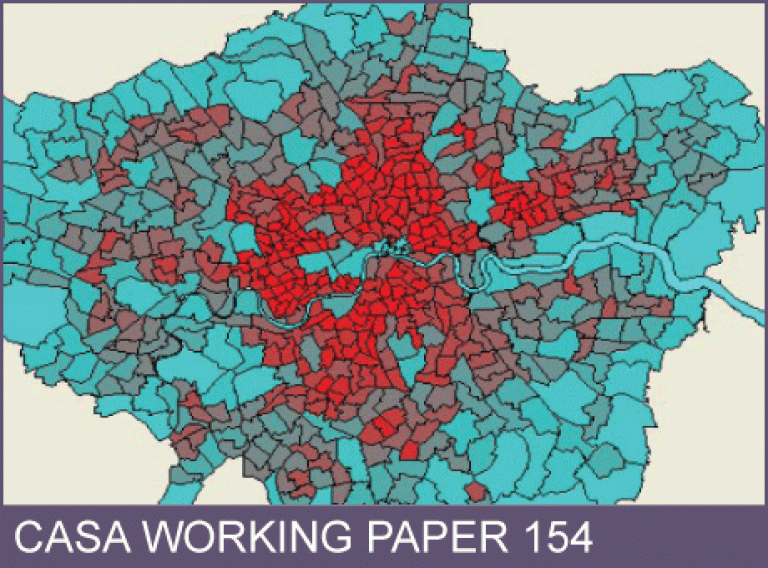CASA Working Paper 154

1 March 2010
Space, Scale, and Scaling in Entropy-Maximising
Entropy measures were first introduced into geographical analysis during a period when the concept of human systems as being in some sort of equilibrium was in the ascendancy. In particular, entropy-maximising, in direct analogy to equilibrium statistical mechanics, provided a powerful framework in which to generate location and interaction models. This was introduced and popularised by Wilson (1970) and it led to many different extensions that filled in the framework rather than progressed it to different kinds of models. In particular, we review two such extensions here: how space can be introduced into the formulation through defining a 'spatial entropy' and how entropy can be decomposed and nested to capture spatial variation at different scales.
Two obvious directions to this research, however, have remained implicit. First, the more substantive interpretations of the concept of entropy for different shapes and sizes of geographical systems have hardly been developed. Second, an explicit dynamics associated with generating probability distributions has not been attempted until quite recently with respect to the search for how power laws emerge as signatures of universality in complex systems. In short, the connections between entropy-maximising, substantive interpretations of entropy measures, and the longer term dynamics of how equilibrium distributions are reached and maintained have not been well-developed. This has many implications for future research and in conclusion, we will sketch the need for new and different entropy measures as well as new forms of dynamics that enable us to see how equilibrium spatial distributions can be generated as the outcomes of dynamic processes that converge to the steady state.
This working paper is available as a PDF. The file size is 827.70KB.
Authors: Michael Batty
Publication Date: 1/3/2010
 Close
Close

